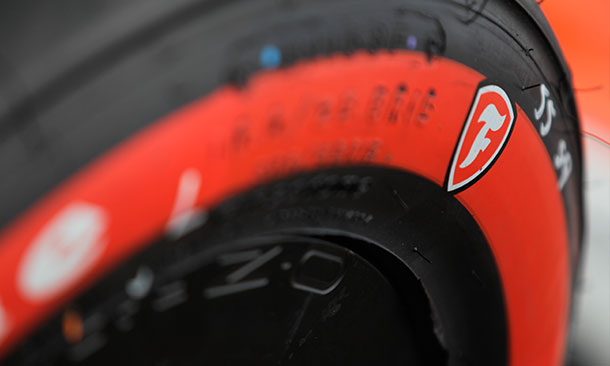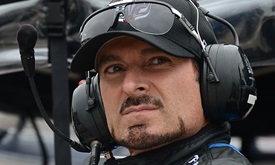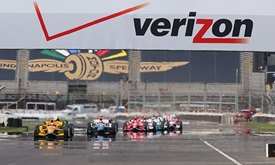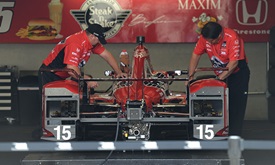The engineers' spin: New tire for demands of '500'
MAY 06, 2015
Editor's note: Cara Adams is the Senior Project Engineer for Firestone Racing. She is responsible for the design of all superspeedway and oval race tires, including the tires for the Indianapolis 500.
The month of May is upon us. For those of us at Firestone Racing, May holds a special place in our hearts as we pack our bags, cars and bicycles to relocate to Indianapolis for the better part of the month.
Indianapolis Motor Speedway is where Firestone got its start in racing, all the way back in 1909, with the first-ever running at this iconic racetrack; and Firestone was there in Victory Lane in 1911 with Ray Harroun’s Marmon Wasp for the inaugural running of the Indianapolis 500. This year, Firestone will crown its 66th Indy 500 winner – that is twice as many winners as all other tire manufacturers combined.
Firestone Racing started out the month at IMS with the debut of the Honda and Chevrolet superspeedway aero kits on May 3. While this test was primarily used to test out the aero kits, Firestone also used the test to launch our new Firestone Firehawk Indy 500 Tire, which was developed with the aero kits in mind. The new tire features include a softer left side construction and a new right side compound, among other changes.
After supporting the running of rookies and veterans alike, the fine folks at the Speedway switch track configurations to set up for the Angie’s List Grand Prix of Indianapolis. With the cars back in road course trim for the Grand Prix, we expect to see the highest loads and speeds of any road or street course this season. We will use the same set of primary and alternate specifications for the Grand Prix of Indianapolis as we used in 2014. As we’ve done all season, this will give the teams a “known” consistency to help them engineer their cars for the aero kits.
After the race, the cars and track will be quickly changed back to the oval configuration, and we’ll also switch back to the new Firestone Firehawk Indy 500 tires. After receiving four sets for the test day (in addition to any rookie or refresher sets), teams receive 36 sets for the remainder of the practice, qualifying and race. Firestone has loaded 1,338 sets or 5,552 tires for this year’s Indy 500.
The month of May is both a great experience and a lot of work for everyone that is part of the Verizon IndyCar Series. Firestone Racing’s engineers are at the track early to answer any questions from drivers, manufacturers and teams, and we work side-by-side the teams in pit lane during the long practice and qualifying sessions to make sure the race tires are performing at their very best.
After five straight days of practice, it is time for qualifying. Qualifying for the Indianapolis 500 is unlike any other event because it takes two days to determine the starting grid.
On May 16, after a morning practice session, the first round of qualifying begins. All cars will get in line to qualify and the fastest nine cars will advance to the “Fast 9” session the next day.
On May 17, the drivers will go through another morning practice before the first session of qualifying takes place to fill positions 10 through 30, followed by a second session to determine positions 31 though 33 and any unqualified cars. After these sessions are complete, the “Fast 9” take to the track as the drivers get one chance to determine the 99th Indianapolis 500 pole sitter and starting positions for the front three rows of the grid.
All of us stay busy off-track as well with different activities and we participate in a multitude of great charity events during our time in Indianapolis, including Racing for Cancer’s Yellow Party (May 21) and Sam Schmidt’s Racing to Recovery function (May 23). Firestone is also the presenting sponsor of Legends Day and the Legends Day Concert featuring Florida Georgia Line.
You can follow along on firestoneracing.com or on Twitter and Instagram (@FirestoneRacing).



















